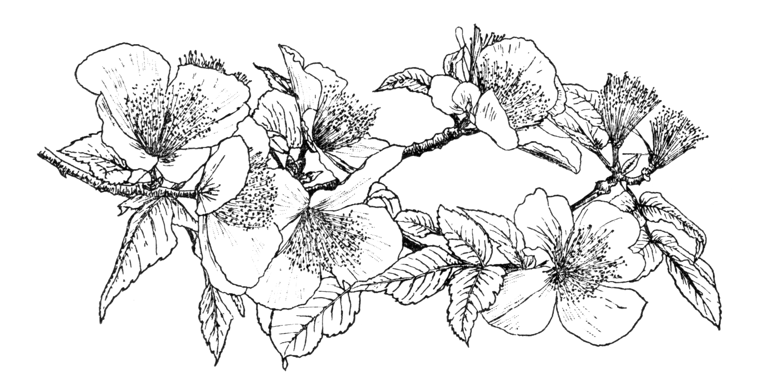A deciduous or partially evergreen small tree 10 to 25 ft high, with erect branches, bearing the leaves in a cluster towards the end of each shoot. Leaves opposite, pinnate, composed of three or five leaflets, which are ovate to oval, 11⁄2 to 21⁄2 in. long, regularly toothed, dark shining green. Flowers produced singly or in pairs from the end of the shoot, and from terminal leaf-axils, each one 21⁄2 in. across; petals four, white; stamens numerous, with yellow anthers. Fruit a hard, woody, pear-shaped capsule 1⁄2 to 3⁄4 in. long. The young wood, leaf-stalks and leaves are hairy when young. Bot. Mag., t. 7067.
Discovered by Gay, the Chilean botanist, about 1845, on the rocky banks of the river Biobio; introduced in 1859 by R. Pearce, when collecting in Chile for Messrs Veitch. It is the finest and best of the eucryphia species, and the only one hardy near London. Blossoming in July and August, it is then a plant of singular beauty with its large pure white petals and conspicuous tufts of stamens. Unfortunately, although hardy, it is not easy to propagate or transplant, consequently it has never become common. In a young state it is apt to die off without any apparent reason, although when once established it appears to continue in good health indefinitely. A moist peaty soil is best for it in the juvenile state, and a little plot of this should be provided for it when planted. Afterwards when established and strong, its roots will spread into the ordinary soil around if it is free from lime. The best success with it at Kew has been obtained by planting it in beds of heaths where its roots are shaded. I think many premature deaths are due to the sun, on scorching summer days, beating on naked soil about its roots, in the Lower Thames Valley at any rate. Seeds are produced in this country, and it can also be increased by layering. Seedlings should be given peaty soil; they are worth every care. The dying leaves fade off into orange and red.
In contrast to E. cordifolia, which is a regular constituent of the rain forests of the Chilean lake region, this species is very rare in the natural state. In cultivation it has reached 44 ft in height at Lanarth in Cornwall but the larger specimens seen in gardens are usually around 15 to 20 ft high.
There is a double-flowered form, not of much value, which often appears among seedlings.


